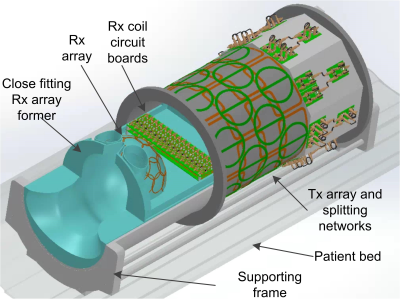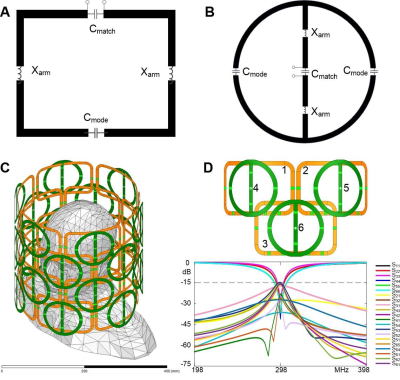Ming Lu1,2, John C. Gore1,2, and Xinqiang Yan1,2
1Vanderbilt University Institute of Imaging Science, Nashville, TN, United States, 2Department of Radiology and Radiological Sciences, Vanderbilt University Medical Center, Nashville, TN, United States
1Vanderbilt University Institute of Imaging Science, Nashville, TN, United States, 2Department of Radiology and Radiological Sciences, Vanderbilt University Medical Center, Nashville, TN, United States
A 48-channel self-decoupled
head coil using the optimized size was simulated with the human model, and it
is found this coil exhibits high inter-element isolation (-15 dB) as well as
the high efficiency.

Figure 5: Mechanical design of the 48-channel self-decoupled Tx-only array along with the anatomy-fitting Rx coil. This design could be used for human brain
and spinal cord imaging as well as brain only imaging.

Figure 4: (A) and (B): Diagram of a
single self-decoupled loop (Yan et al, 2018, Nat. Commun.) coil and a single self-decoupled
dipole antenna folded in figure-of-8 shape (Lu et al, 2020, ISMRM). (C)
and (D): Simulation model of the 48-element Tx array and truncated human
model, along with the simulated S-parameter plots of 3 loops and 3 folded
dipoles in two rows. Isolation between any two of 3 loops and 3 dipoles is
better than -15 dB by using self-decoupling technology. Loops in adjacent rows
are overlapped to ensure enough B1 field coverage in the
longitudinal direction (z-direction).
